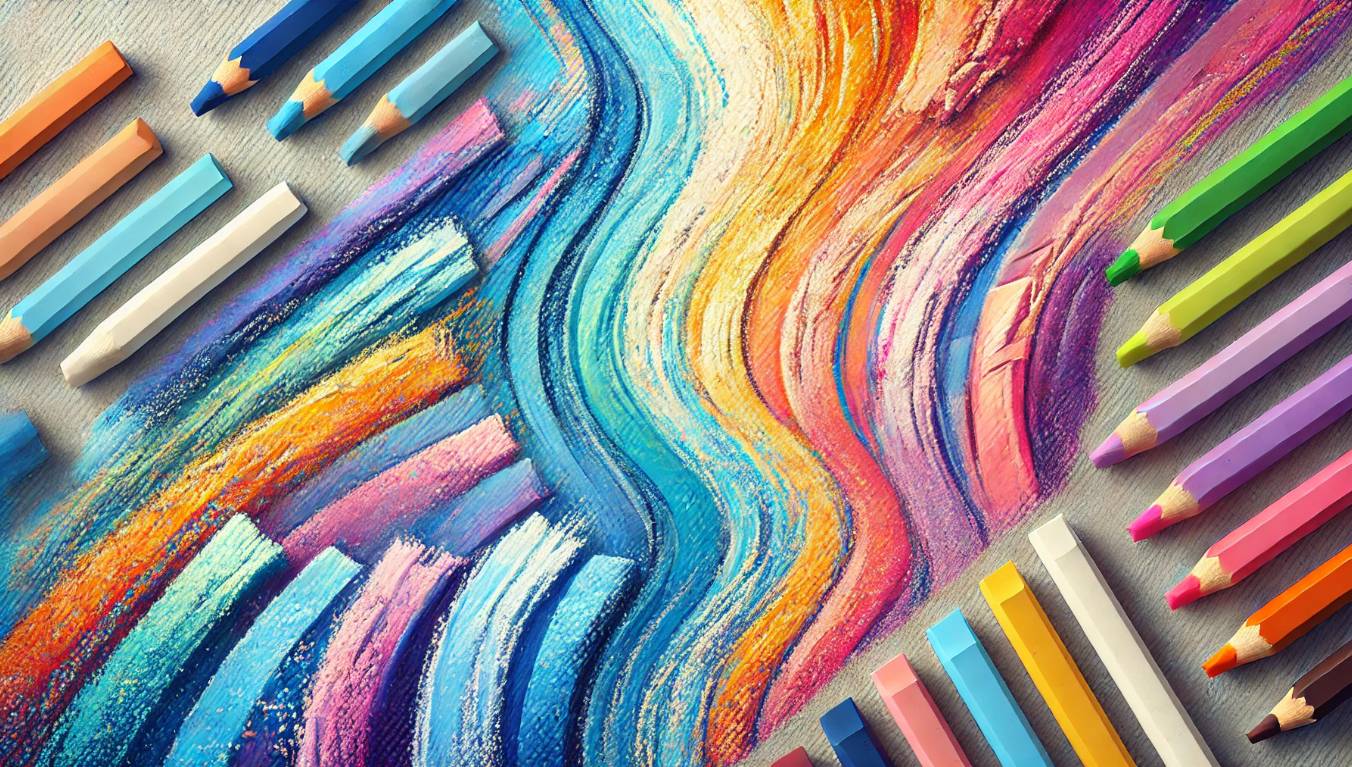Artistic expression knows no bounds, and when it comes to pastels, the possibilities are endless. Whether you’re a professional artist or a hobbyist, selecting between soft vs. hard pastels can significantly impact your artistic outcome. Understanding their differences can transform a simple sketch into a vibrant masterpiece.
This guide explores the key characteristics of soft and hard pastels, including their textures, blending capabilities, ideal applications, and how they can complement each other. By the end of this article, you’ll have a clearer idea of how to integrate both into your creative process effectively.
Understanding Soft and Hard Pastels
Both soft and hard pastels have distinct properties that make them suitable for different artistic applications. Soft pastels are known for their high pigmentation and easy blendability, making them perfect for expressive, painterly works. On the other hand, hard pastels are more durable and precise, making them ideal for fine details and structured compositions.
Understanding these differences allows artists to optimize their creative techniques and use each pastel type where it shines the most.
Composition and Texture
Soft Pastels: Rich Pigment, Smooth Blending
Soft pastels are renowned for their intense color payoff due to a high concentration of pigment with minimal binder. This results in a crumbly texture that can be easily blended to create smooth gradients and soft transitions.
✅ Highly pigmented for vibrant colors
✅ Perfect for creating depth and atmosphere
✅ Easily blendable for seamless transitions
However, their delicate nature makes them more prone to breakage and dust, requiring careful handling.
Hard Pastels: Precision and Durability
Hard pastels contain more binder and less pigment, giving them a firm texture that allows for greater control and precision. They are excellent for detailed sketches, cross-hatching, and layering without excessive smudging.
✅ Ideal for fine lines and intricate details
✅ Durable and less prone to breakage
✅ Great for initial sketches and structured compositions
Hard pastels can also be used to add final touches to soft pastel artwork, making them a versatile choice.
Blending and Layering Techniques
Blending with Soft Pastels
Soft pastels are famous for their blendability, allowing artists to create stunning color transitions. Techniques include:
- Using fingers, blending stumps, or soft brushes for smooth gradients
- Applying layering techniques to build color depth
- Experimenting with scumbling and feathering for different textures
However, excessive blending can lead to muddy colors, so maintaining contrast and vibrancy is key.
Layering with Hard Pastels
Hard pastels are perfect for layering fine details and refining edges. Artists can:
- Use them to sketch initial outlines
- Apply them over soft pastels for sharp highlights and defined details
- Utilize cross-hatching and stippling techniques for added texture
Hard pastels help maintain structure in an artwork, ensuring clarity and precision.
Best Applications for Soft and Hard Pastels
Soft Pastels: Expressive, Painterly Styles
Soft pastels work well for:
- Portraits – Capturing delicate skin tones and emotional depth
- Landscapes – Creating atmospheric effects and blending vast scenery
- Abstract Art – Using vibrant color interactions for expressive compositions
The ease of blending allows for a free-flowing, intuitive approach to art-making.
Hard Pastels: Sketching and Detailing
Hard pastels excel in:
- Architectural Drawings – Precision for structured compositions
- Technical Illustrations – Clean, defined lines and minimal smudging
- Mixed-Media Art – Combining with charcoal, graphite, or ink for dynamic results
Their firm texture makes them perfect for initial sketches or final refinements.
Combining Soft and Hard Pastels for Maximum Impact
Many artists find that combining both types of pastels leads to the best artistic results.
🎨 Start with Hard Pastels – Use them for initial sketches and outlines
🎨 Layer Soft Pastels – Apply them for rich color and smooth blending
🎨 Refine with Hard Pastels – Add details, sharp edges, and final highlights
This technique ensures both depth and precision, enhancing the overall composition.
Using Pastel Pencils as a Middle Ground
For those seeking a balance between soft and hard pastels, pastel pencils provide an excellent alternative.
✏️ Offer greater control for fine details
✏️ Encased in a pencil form for easy handling
✏️ Less messy, making them ideal for portability
Artists can use pastel pencils alongside soft and hard pastels to achieve both precision and expressive depth.
Common Mistakes to Avoid
❌ Overblending with Soft Pastels – Can result in dull, muddy colors
❌ Not Sharpening Hard Pastels – Leads to imprecise and thick lines
❌ Skipping Fixatives – Unprotected pastel artwork can smudge easily
Understanding how to work with pastels effectively will prevent frustration and elevate your art.
Preserving Your Pastel Artwork
Using Fixatives for Protection
Fixatives help seal pastel particles, preventing smudging and color loss.
- Use light sprays to avoid altering colors
- Apply in thin layers to maintain vibrancy
- Choose archival-quality fixatives for longevity
Framing Techniques
Proper framing ensures pastel artwork remains intact:
- Use matting to prevent direct contact with glass
- Choose UV-protective glass to prevent fading
- Keep the artwork in a dust-free, dry environment
These steps help maintain the integrity of pastel pieces for years to come.
Conclusion: Finding the Right Balance
Choosing between soft and hard pastels depends on your artistic style and needs.
🎨 Soft pastels are ideal for expressive, painterly effects and smooth blending
🎨 Hard pastels provide precision, structure, and detailed sketching
🎨 Combining both allows for rich, dynamic compositions
Experimenting with different pastel techniques will help you discover the best methods to enhance your artwork. Whether you’re creating bold portraits, intricate landscapes, or detailed sketches, mastering both soft and hard pastels opens up endless creative possibilities.
📌 Want to improve your pastel skills? Explore our tutorials on blending, layering, and advanced pastel techniques!





